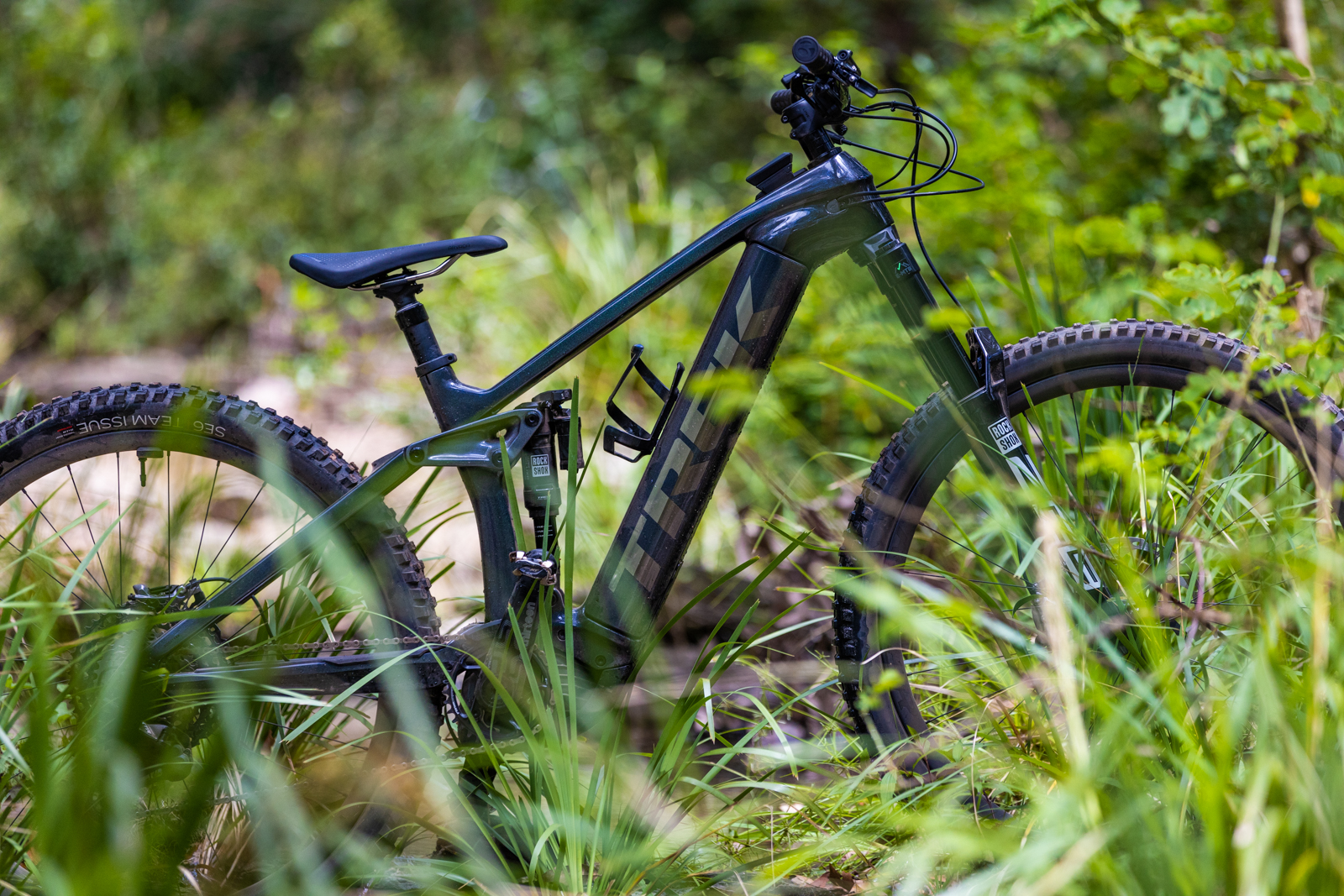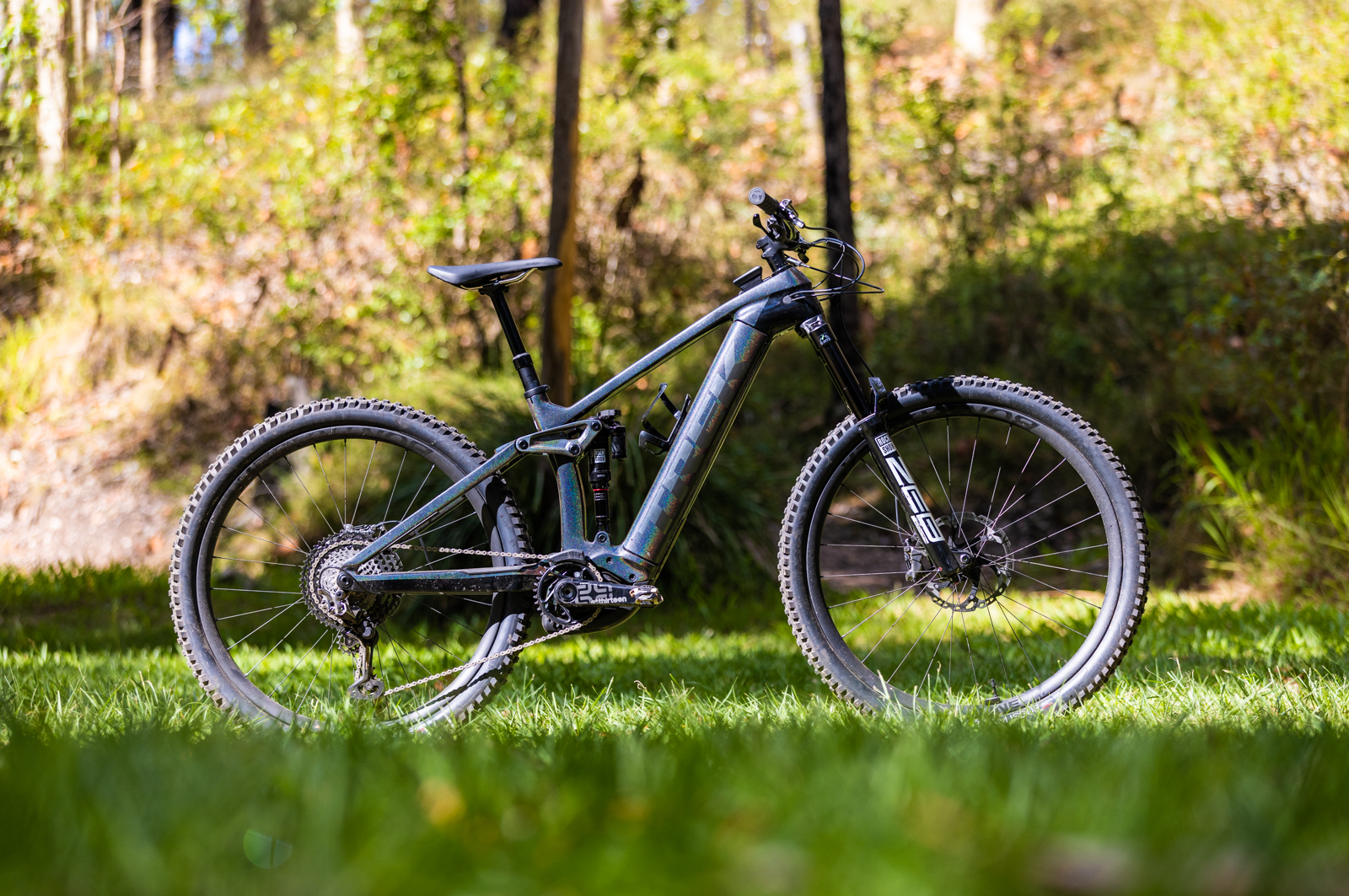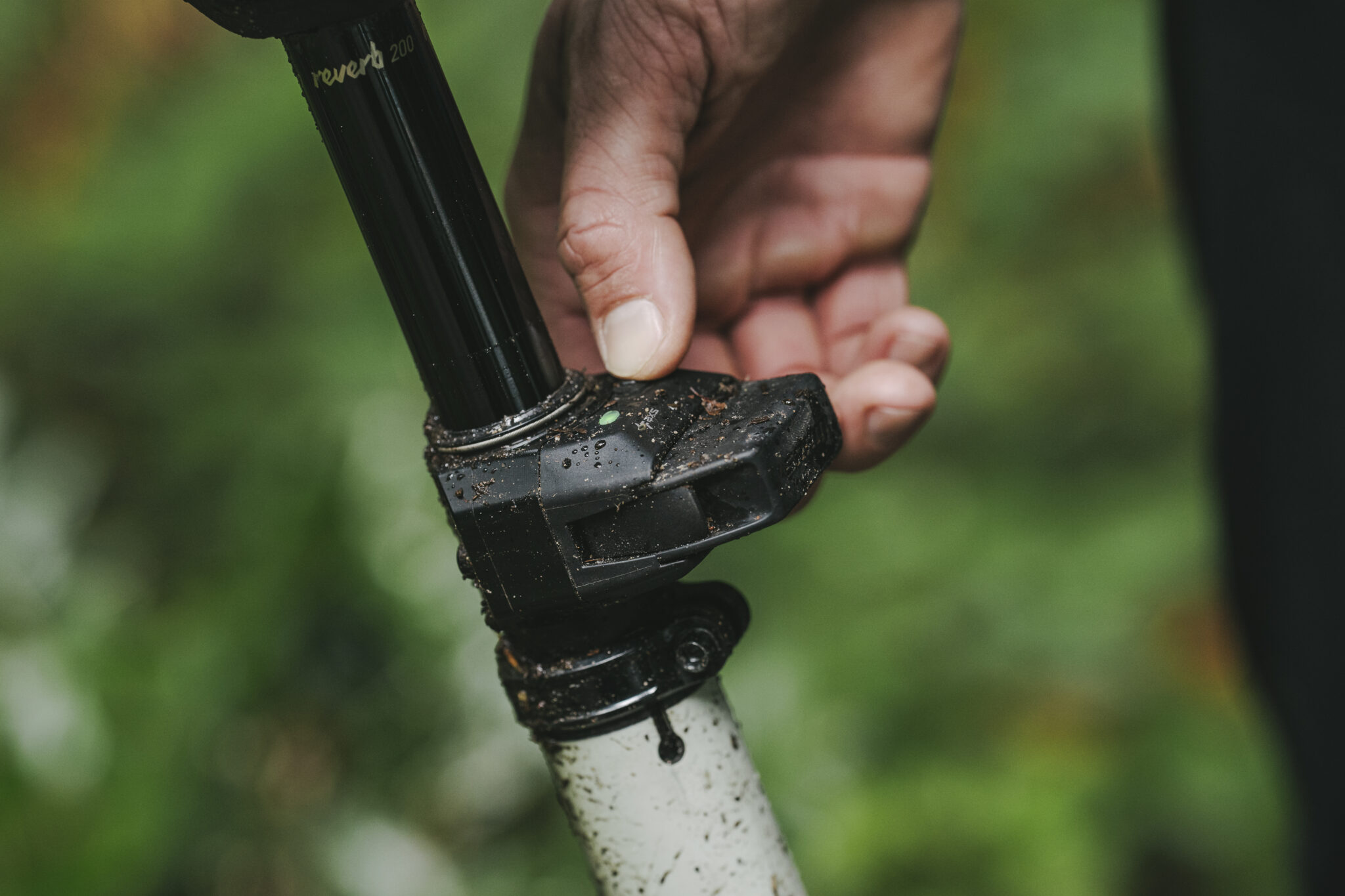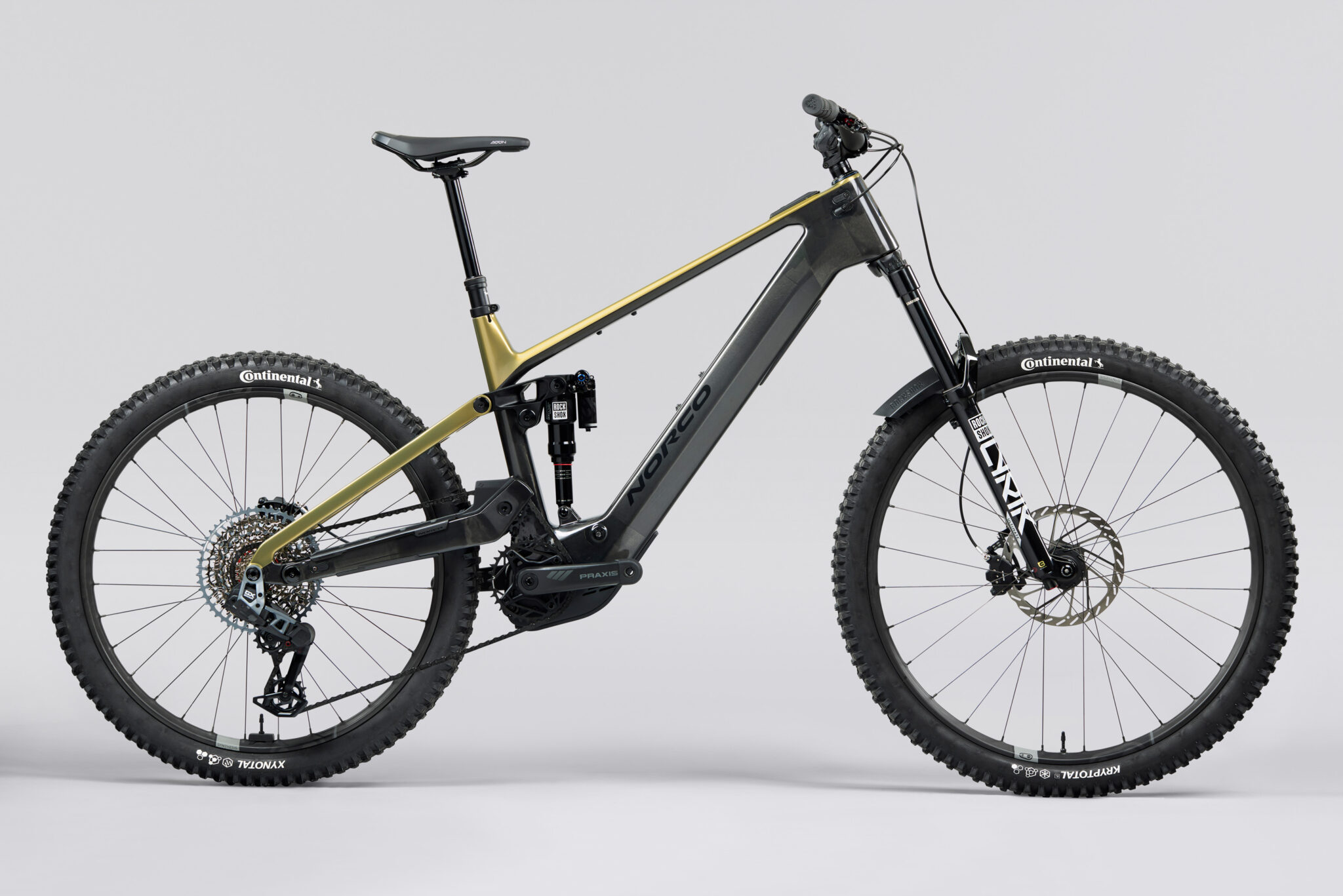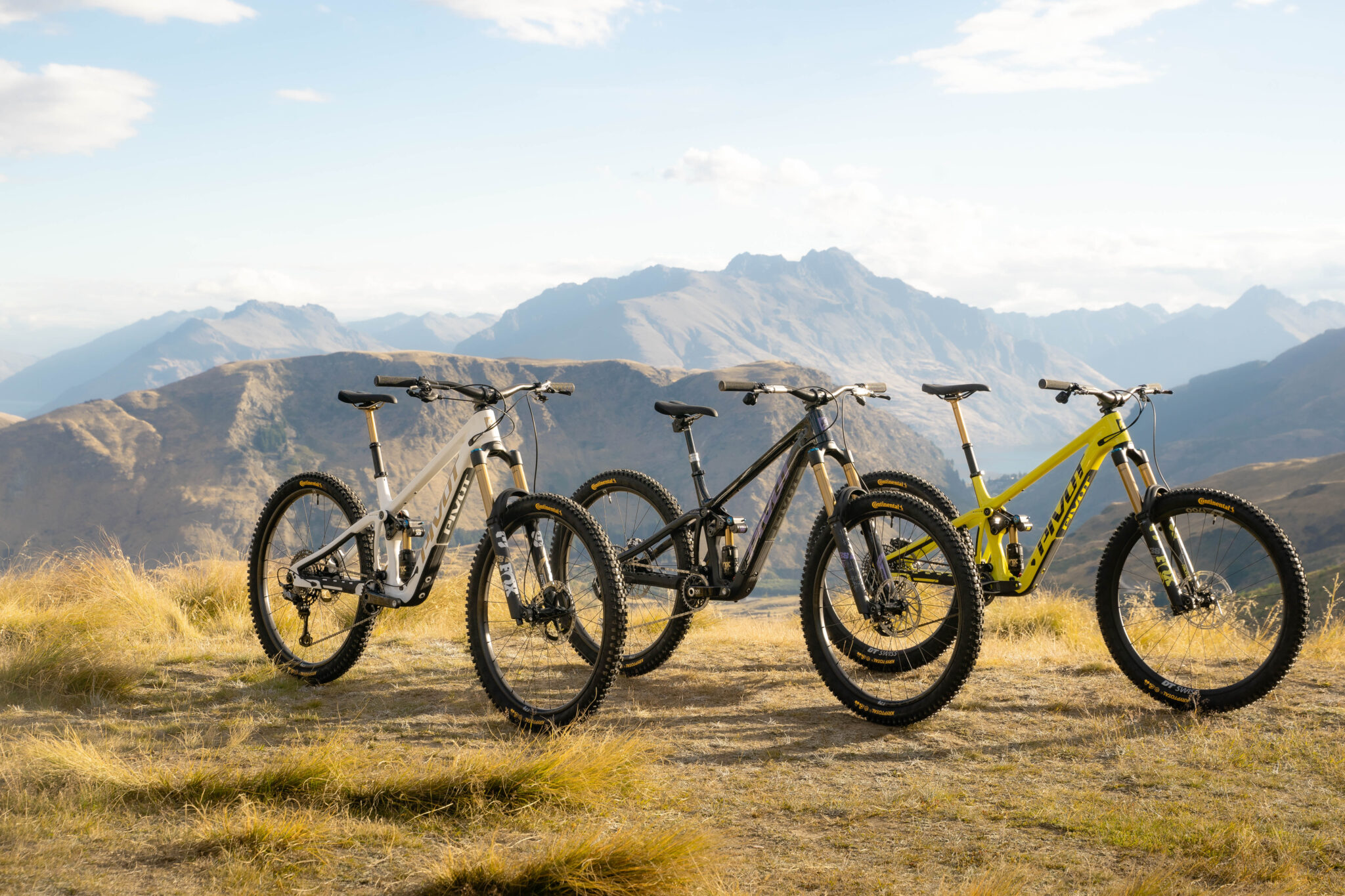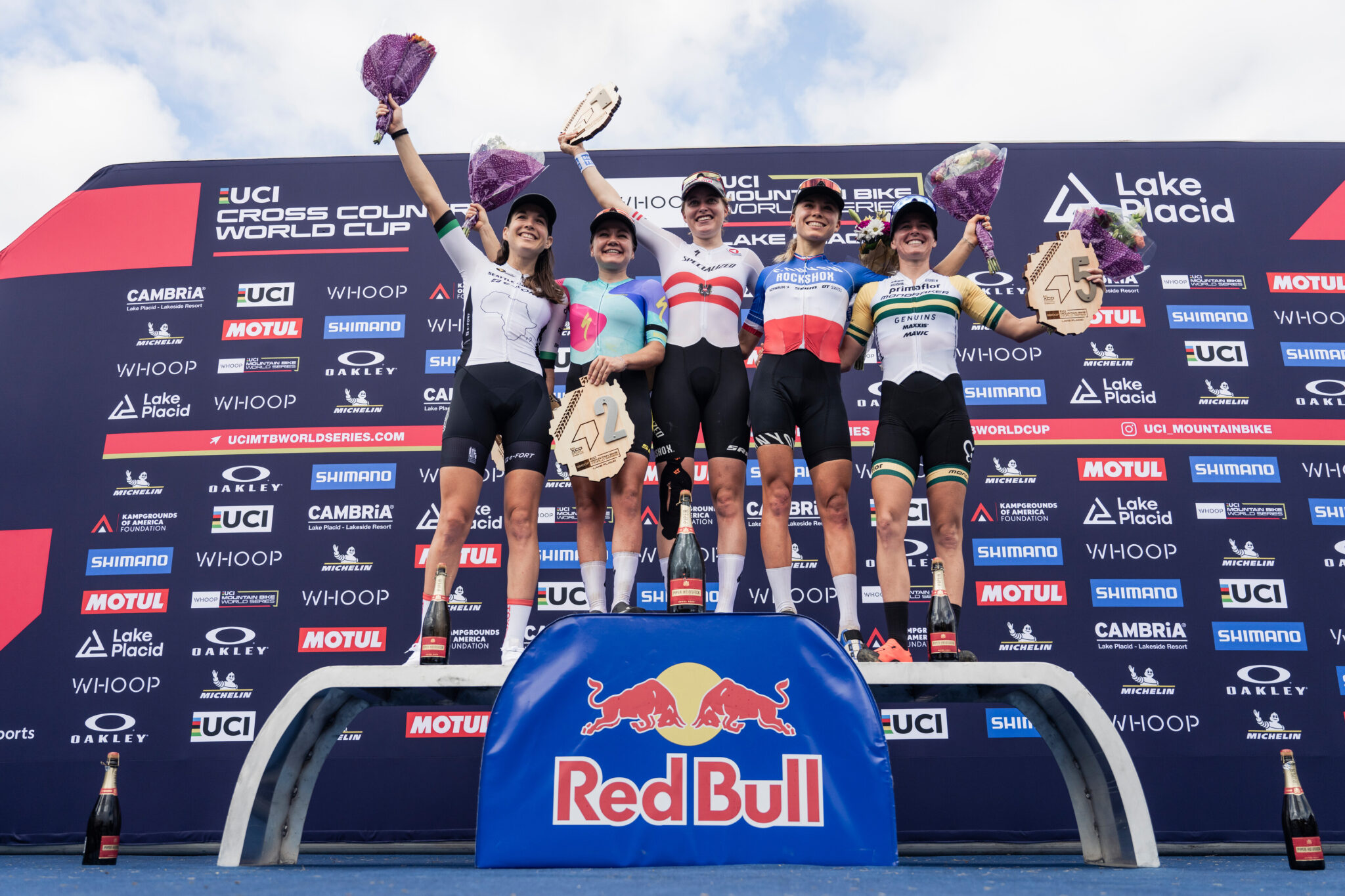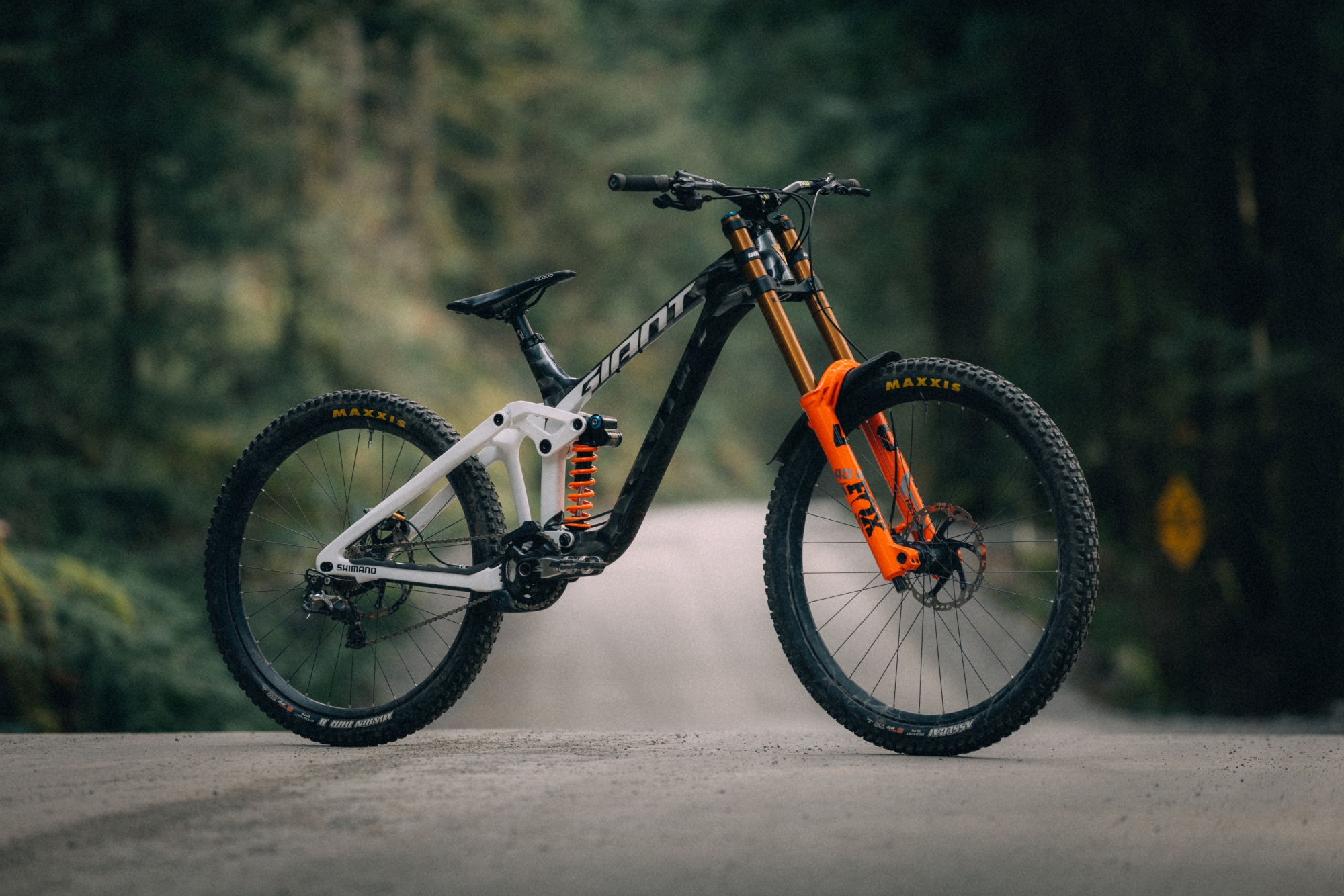TESTED: Trek Rail 9.9 2022
If you’re after a super capable, stable, plow-through-anything enduro sled with a motor that is full power and long-lasting, for big days self shuttling downhill or days at bikeparks with more gnar than flow, then this may be the bike for you.
Photographer: Gerard Lagana | Words: Anna Beck
Trek is a brand that’s synonymous with performance, a heavyweight in the cycling industry. Trek promises performance that is accessible to the everyday rider, and the Rail is no exception.The top spec Trek Rail 9.9 XTR hits shop floors at $15,999, it may be a little less accessible than others in the range, but the 9.9 is the Big Kahuna of the Trek Rail range which was initially released in 2020. The Trek Rail 5 hits shop floors at $7499. Trek have a bit of history in the eMTB game with their early offering the Powerfly series, a hardtail eMTB, followed by the Powerfly FS bringing a full suspension model to the game, and now the Trek Rail and new Fuel EXe offer a full noise gravity eMTB, and lightweight trail bike models to the increasingly hungry bike market.
Tester: Anna Beck
Riding Experience: Riding and racing bikes for too long, but still enjoys riding crosseyed uphills
Generally Rides: Orbea Oiz, Transition Sentinel
Height: 168cm
Weight: 62g
Bike Test Track: Ironbark and Brisbane north side sketchy DH
The Rail 9.9 is adorned with swathes of Shimano XTR 9100 on the Trek OCLV carbon frame. The Rail 9.9 has been on a carbon diet, with Bontrager Line Pro 30 carbon wheel set, and Line Pro 30 Carbon bar. Suspension is delivered by a Rockshox ZEB Ultimate fork and SuperDeluxe Shock, but Trek have really gone the extra distance with this model, even offering TyreWiz and AirWiz to collect all the data, and optimise your ride. The Rail platform delivers 160mm travel up front with 150mm in the back, on a 29er stock setup. The new 9,9 and 9.8 XT ($12499) use the new Bosch Smart System motor and battery. The larger battery needs some more room, so these frames also have about 12mm longer reach and other slight geometry updates over the other models. Our medium test bike, in the low MinoLink setting, has a 452mm reach, 64.2 degree head angle and an effective seat angle of 76.7 degrees.
In terms of comparable products, we are looking at a fight of the giants: this bike fits into a similar price bracket and target market to the Specialized Turbo Levo Expert ($16,500) or Giant’s Trance X Advanced E+ 0 ($12,799), so I was keen to see how the bike stacks up against the other heavyweights in the market.
READ: Trek Rail 7 bike review
Initial Impressions
The bike is aesthetically impressive: the Dark Prismatic/Trek Black is an enigmatic grey/black that flashes rainbows in the light. Together with a premium build kit and carbon wheels, the bike looks business. The flip chip also allows a mullet set up for those that are so inclined: chuck it in the high setting, add a 27.5” rear wheel and you’re good to go!
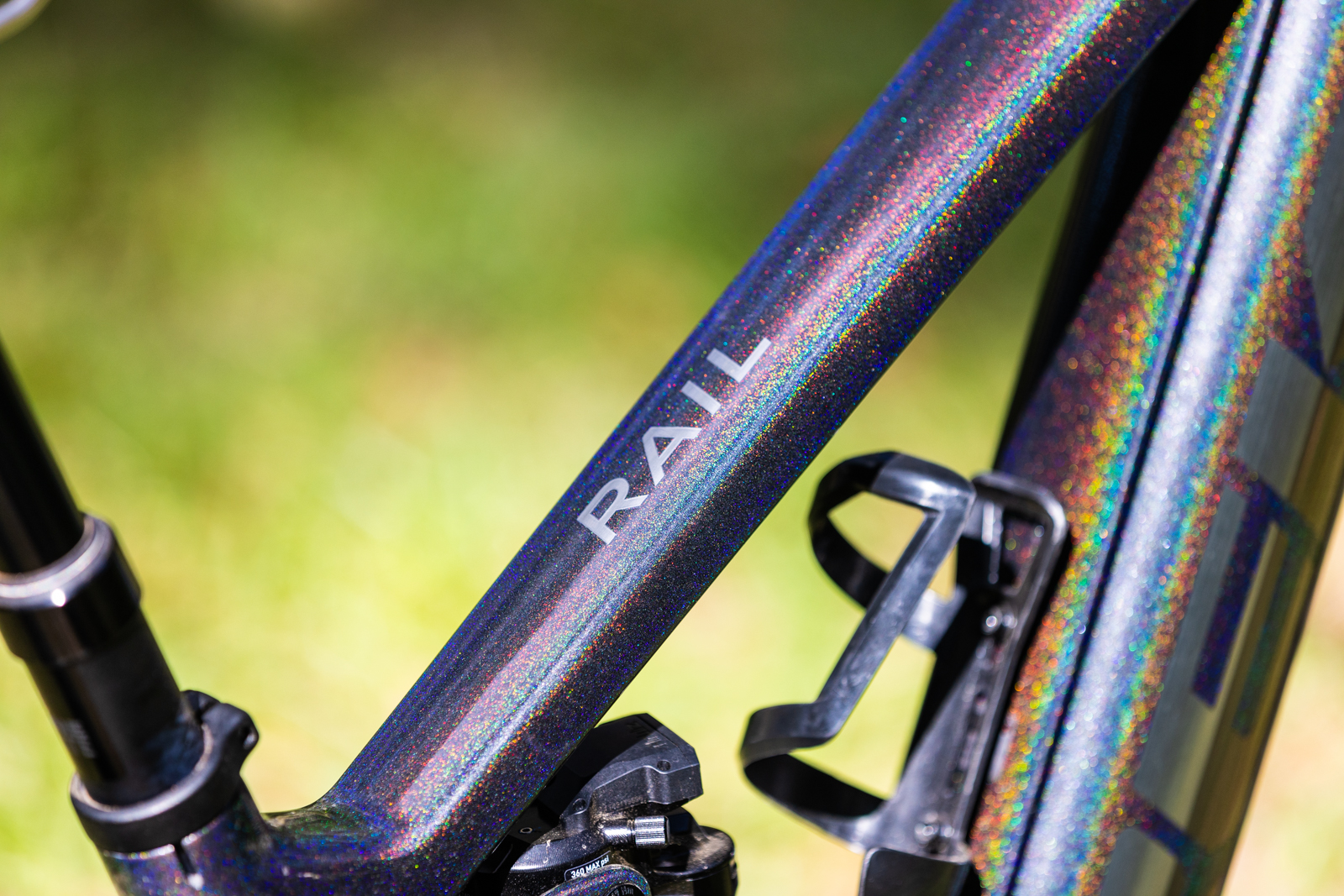
Gone are the chunky external battery packs of early ebikes; the Trek Rail like all modern eMTBs is sleek and integrated. While the oversized downtube with integrated battery and Bosch motor may be obvious to the trained eye, more than ever before Trek has managed to incorporate the battery and motor components of an eBike into a streamlined unit. The sleek design if the Rail is in part due to the Removable Integrated Battery (RIB) which is easily removed with an ABUS key, and also allows for a bottle cage: a heady feature that many eBikes lack.
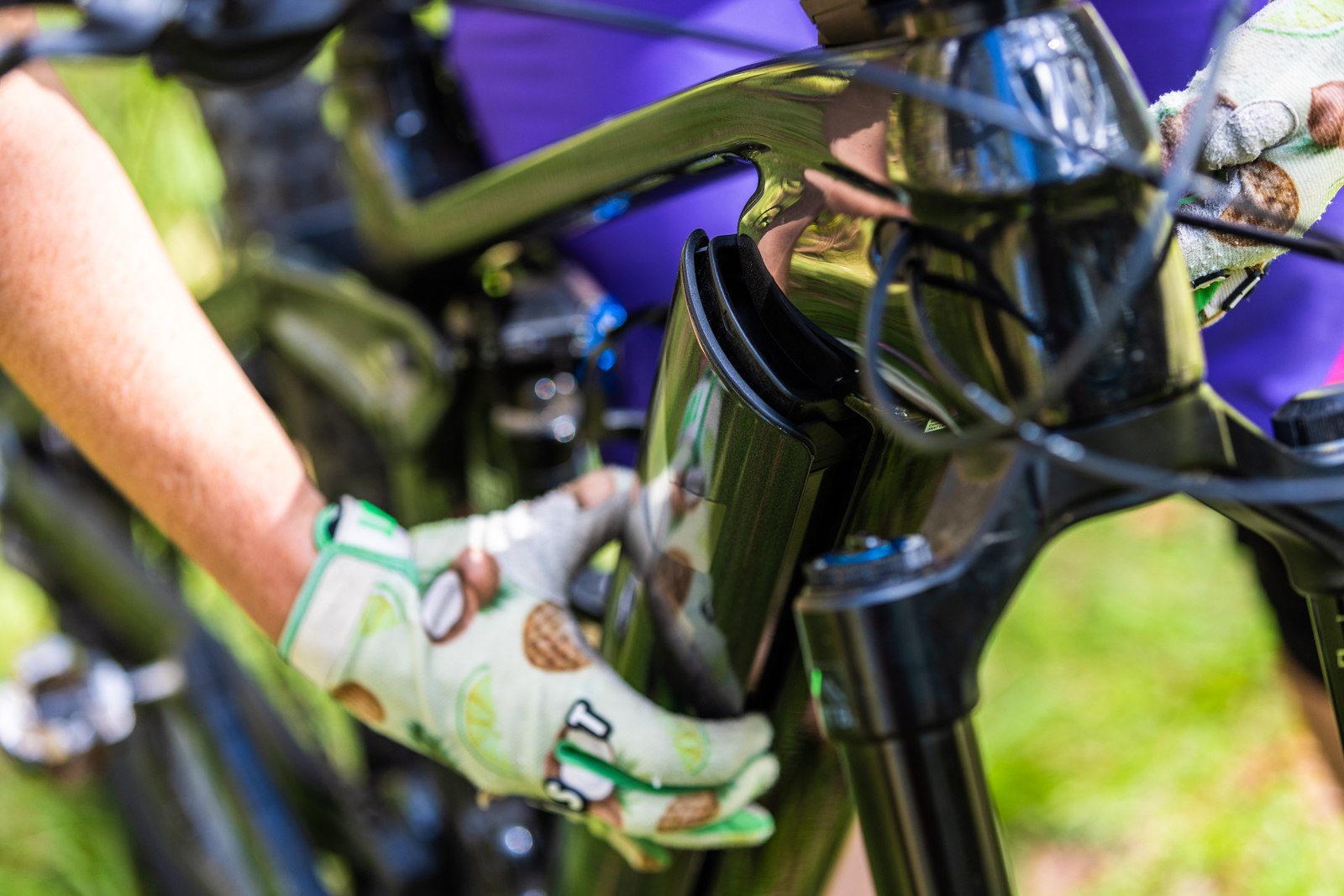
The piece de resistance of the Trek Rail 9.9, however, is the Bosch Smart System. Consisting of the power tube, Performance Line CX motor, KIOX 300 Computer and LED indicator, these components pair with the Flow app for your smartphone. The Bosch power tube is a 750Wh battery: a huge upgrade on their former biggest offering of 625 Wh allowing you to go further, faster. The Bosch Performance Line CX motor retains a peak of 85Nm torque and 250W of maximum power, delivering a maximum assist up to 25km/hr. The Smart System is a synergistic relationship all the Bosch components, linking to the Bosch Flow App for a customisable ride experience. This is the first time I have had the Smart System on test, and I was excited to see how it performed alongside previous experiences on Specialized eBikes with proprietary motors, and other bikes featuring the Shimano Steps system.
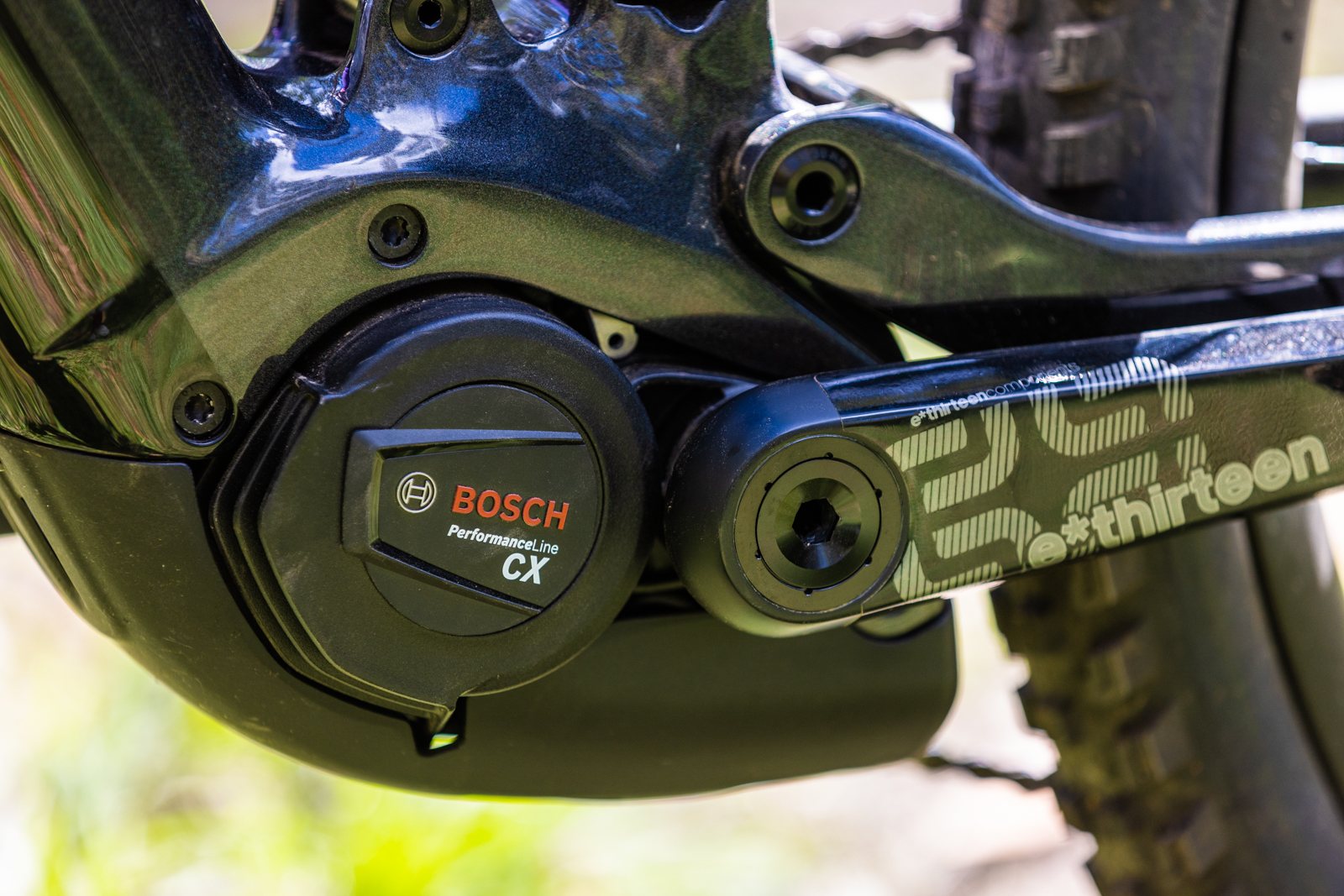
The Bosch Flow app allows you to customise the Smart System by managing max speed (topping out at 25km/hr), adjusting the support from the motor (allowing for more or less motor assistance), dynamic behaviour (speed of motor engagement) and max torque, and is very handy for tracking rides, battery use, kilometres completed and your usage in different settings. However I was surprised with all the reliance of technology this bike brings, that there were no options to upload rides to a third party site: Strava athletes, get ready to mount a second mount to ensure you are stealing all your local eKOMs.
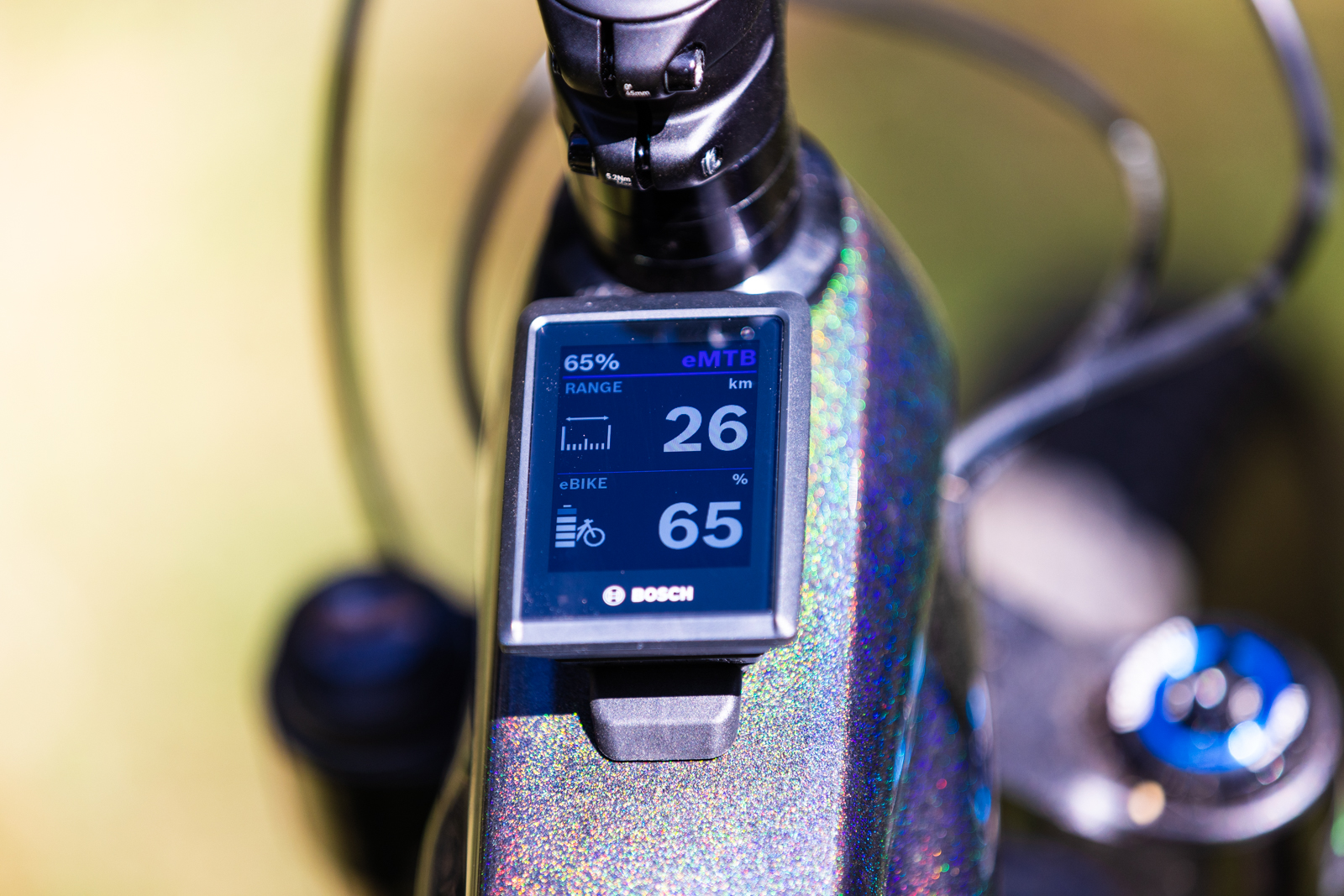
Initial setup and connectivity was as easy as it could be: install the app, make an account, enable bluetooth and link to bike and you’re ready to go. TyreWiz and AirWiz are also add ons to SRAM’s existing AXS app and similarly easy to set up.
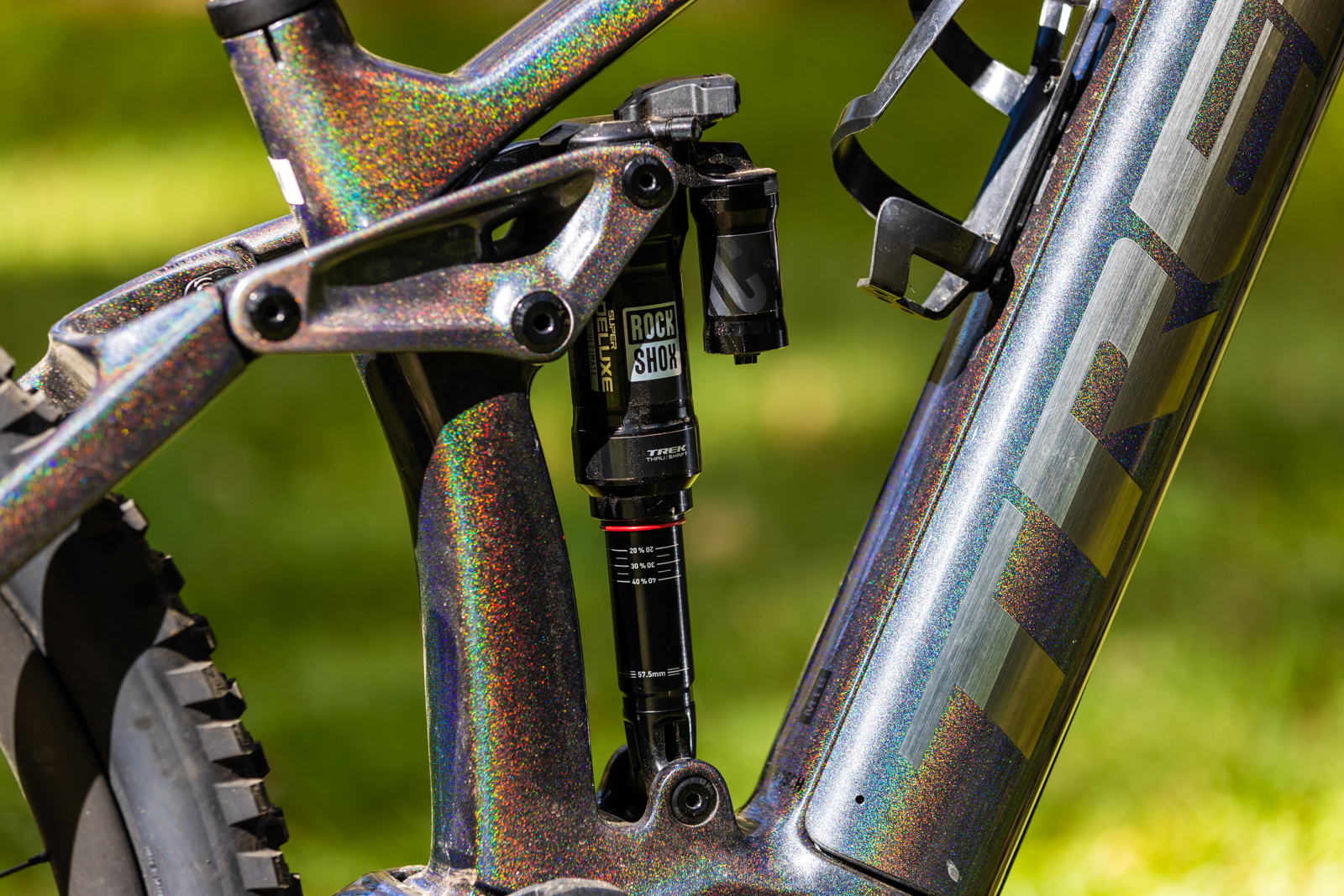
My expectations before hitting the dirt were high: this is a premium bike and as such I expect premium performance. So how does the Bosch Smart System stack up? Would I lose the keys to the RIB in the first week? I plugged it in, set up the app, set my seat height and headed out for my first rides on the Rail.
On The Trail
I tested a medium Rail, and at 168cm it was right on the money. This is the smallest Rail 9.9 available in Australia currently, and bear in mind the small models do drop to a 625Wh battery – as big batteries need room in the frame! Hopping on, the bike felt stable and centred and plowed through some local downhill with ease. This bike is a trail bike that subscribes to the long and low approach, and the default position is quite upright with a reasonably high front end, adding to stability through straight tech however requiring more finesse for faster turns. The head tube angle of 64.2 (64.6 in high setting), is a little slacker than other offerings such as the Trance X (with 150mm travel) but right on par with the 64.5 of the Turbo Levo from Specialized. The Rail has updated the geometry to a steeper seat tube angle, 77.1º/76.7 (high/low), allowing for a more efficient climbing position on seated climbs or traverses, an update that will make taller riders rejoice.
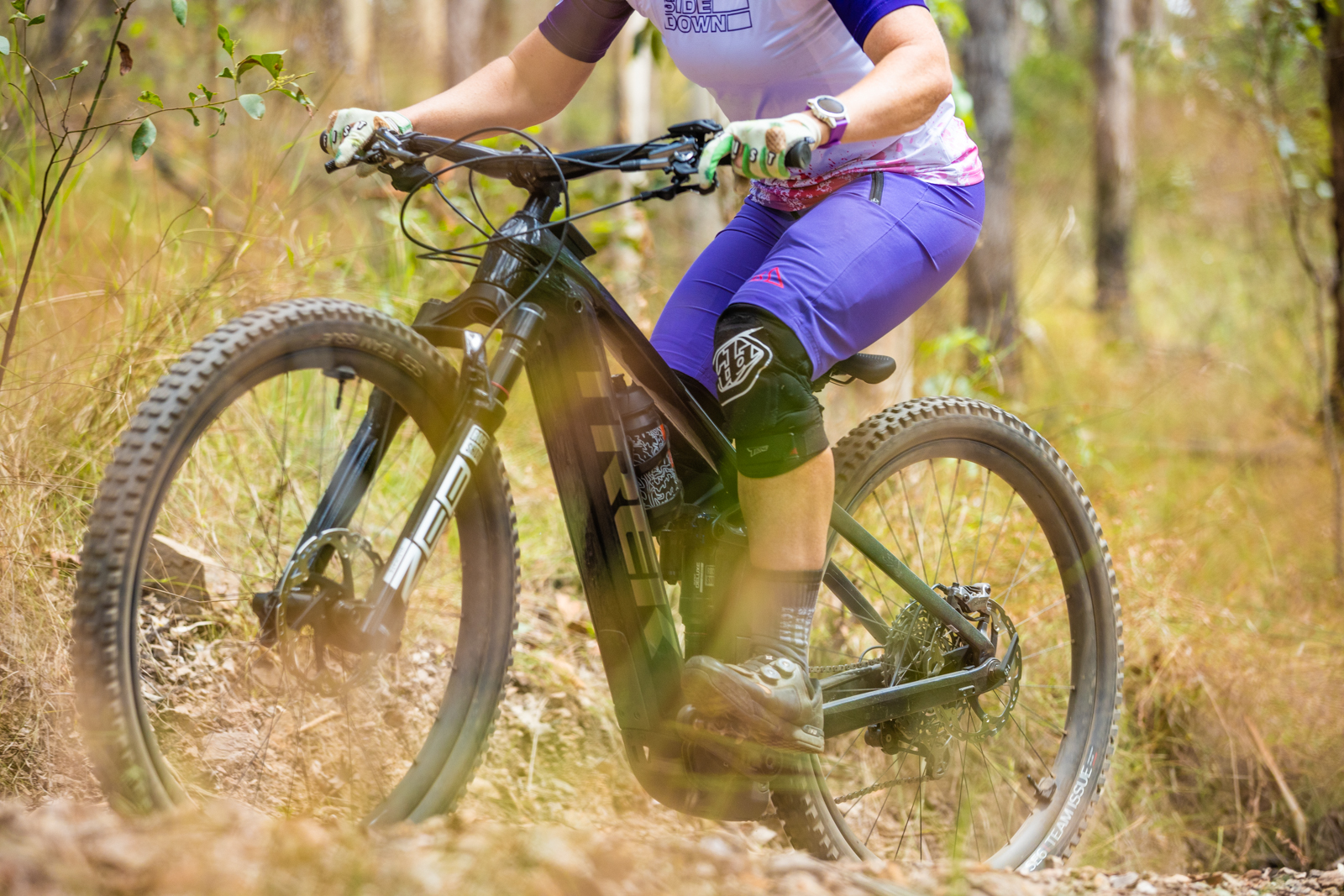
Despite being on a carbon diet, it’s still a big bike and rides as such, when the trail pointed downwards the heft of the bike allowed for rapid acceleration and maintaining your line and speed was the best way to head down the trail. The Rail wasn’t a bike that really poked you to play, preferring to keep it planted and stable, and while some initial small gaps on the bike were ok, I found it a little less fond of time in the air on my favourite local jumps compared to my usual rides. The Rail definitely preferred being planted though flow or tech trails, in part due to it’s long wheelbase, but aided by the reliable support of the RockShox Zeb, which urged you to monster through all types of terrain. The SuperDeluxe offered a compliant small bump response on noisy, chattery trails, while also responding to bigger hits.
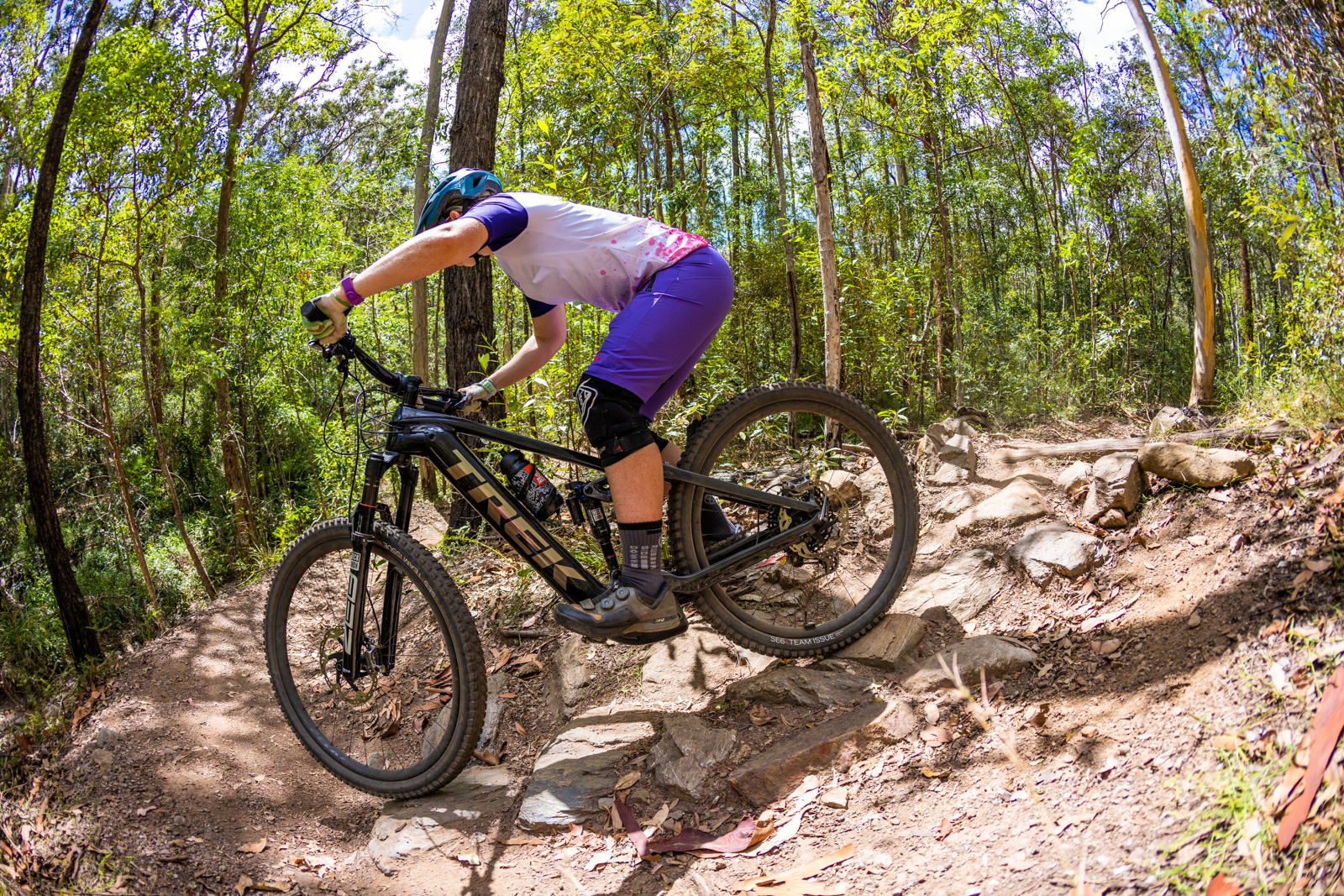
While this ‘slack and planted’ characteristic, may seem like an insult, the planted stability and the Rail’s ability to monster through anything is probably a feature that is desirable for a majority of trail users. For trails further south that rely on sure-footedness through steep and sketchy scree such as Maydena or Queenstown, I could only imagine the Trek Rail would be in its element. This was mirrored on my local trails: the steeper, more off-camber and sketchier the trail, then better the bike would perform. But if I was doing laps at the local park I found the bike lacked the sprite that’s needed to make our flatter, twistier trails more fun. Given these are the same trails our Editor rides – it's no surprise he got along with the Trek Fuel EXe when he tested that.
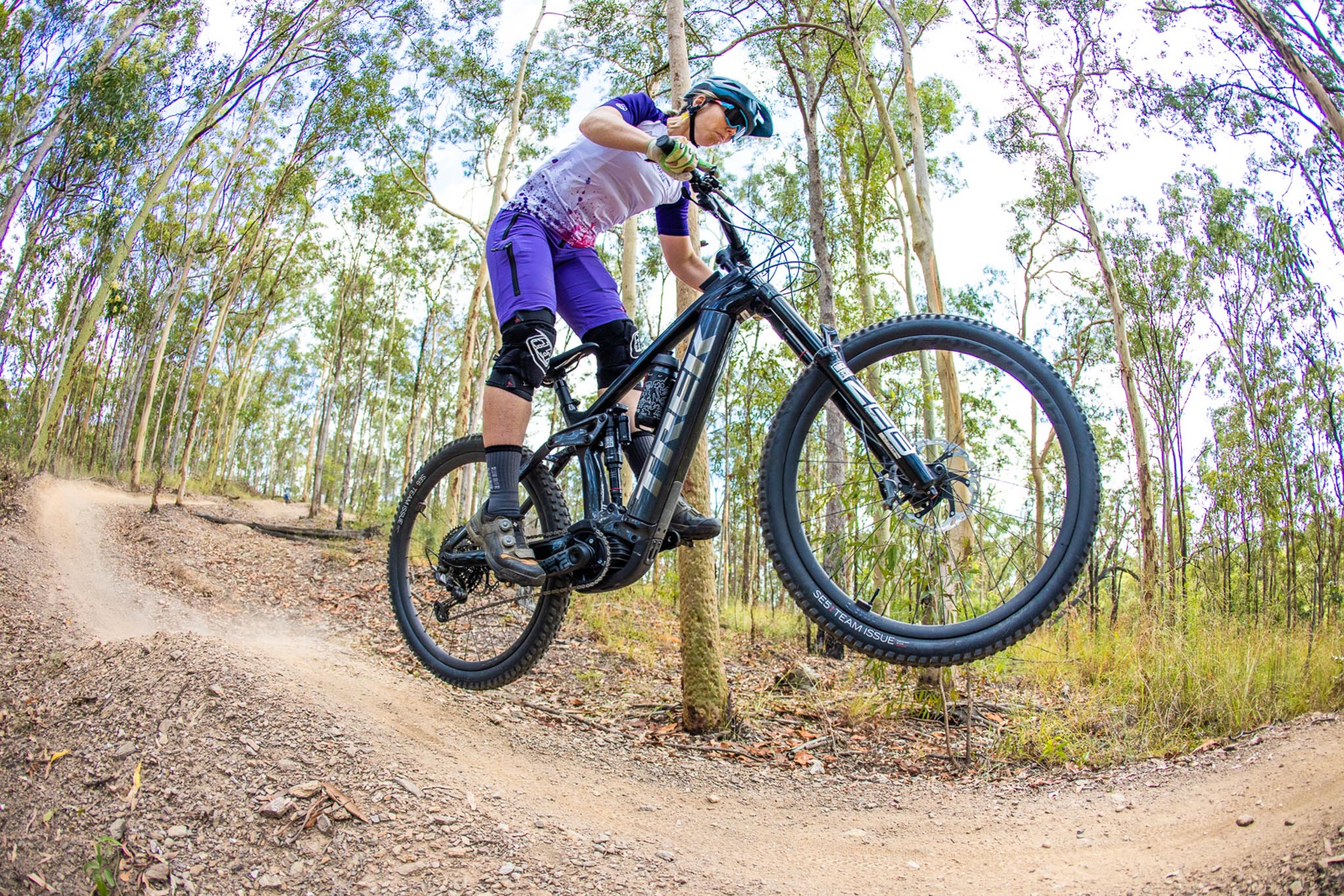
I was suitably impressed with the Bontrager proprietary tyres, even in wet and loose conditions they performed well. While I usually prefer Maxxis Assegai or Minion DHII tyres on my trail bikes, I was pleasantly surprised by the support the Bontrager tyres offered.
I couldn’t wait to see how the Smart System technology translated over to the trails. The biggest change from the standard Bosch Performance CX Gen4 system is the user interfaces and battery size. The mode selector is smaller, head units are better (and optional!) and you have an app, plus the larger battery. It's also a plug and play system for any hardware changes you may wish to make. While my expectations were high, I wasn’t disappointed. Simply turn on the system with a button on the LED controller, it finds your phone an automatically turns on the display which can cycle through a range of pages (using the < and > buttons on the LED Display). Change the mode you’re riding in, you hit the up down buttons on the LED, and press and hold the down for walk mode, allowing you to traverse steep terrain on foot if required.
The LED display itself is very easy to use, and gives you an adequate battery life display, which is also mirrored through the KIOX 300 computer unit, and on the Flow app if you pull it out mid ride. There are ZERO excuses to run out of battery.
The four modes offered: Eco, Tour+, eMTB and Turbo, ranging here in assistance from lowest to highest, have distinct ‘personalities’ that can be used to enhance your ride on different terrain or rides. For example, Eco mode felt not that useful for unless I was headed out with a non eBike rider and wanted to get some work up the hills: it brought me back to a riding reasonably firmly uphill on a cross country bike sort of speed. Tour+ is a dynamic mode that senses input and adjusts the level of support accordingly. I used this on par with Turbo mode, however if we were out doing a multi-day event or for a challenging ride but wanted battery sparing, this would be the mode to use.
The eMTB mode was perhaps the most fun mode in terms of responsiveness, and assist to input ratio. While Turbo was fun for short bursts, the range decreases with this mode and I found eMTB to be the mode I enjoyed the most for everyday trail riding. I actually never used the full battery throughout testing, and the beauty of the Smart System is that the KIOX300 displays the dynamic range predicted, in any mode, adjusting to the terrain you’re riding.
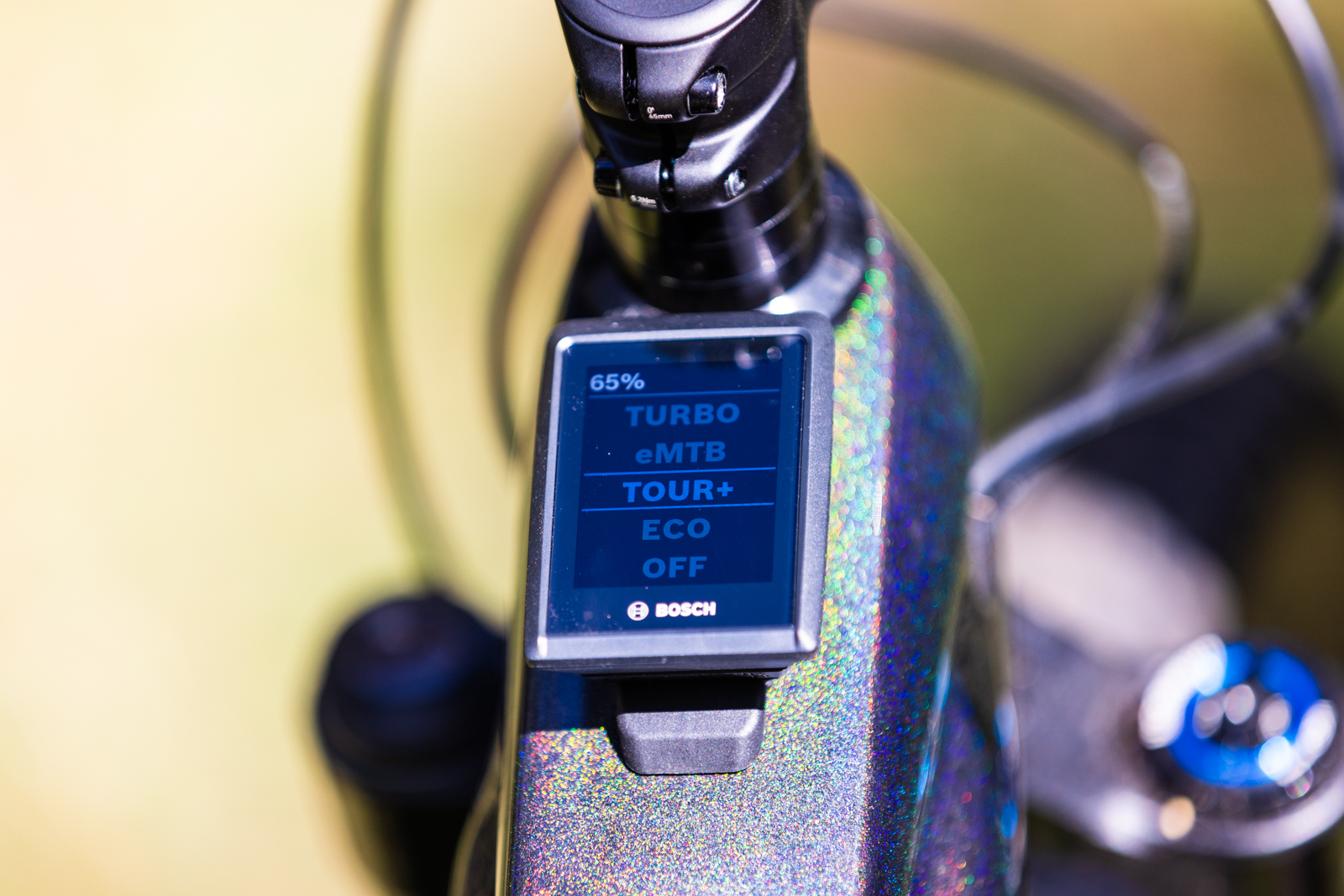
If you’re headed straight up a steep climb self shuttling downhill trails, it may give you 65km in Tour+, 55km in eBike and 25km in Turbo, for example, but cruising along flatter trails and the range will increase significantly.
The Bosch Performance Line CX motor also offers extended boost: allowing pedal-free support for short periods ie: getting a sneaky half pedal wheel lift into a step up, or to throw a couple of pedal strokes in to gain enough momentum to clear a longer jump on a descent. Mix this together with shorter cranks and I never had an issue with clearance. Unlike some other eBikes I have ridden, the Rail lacked noise and clanking on even the roughest of trails, only offering a muted clunk on some big hits.
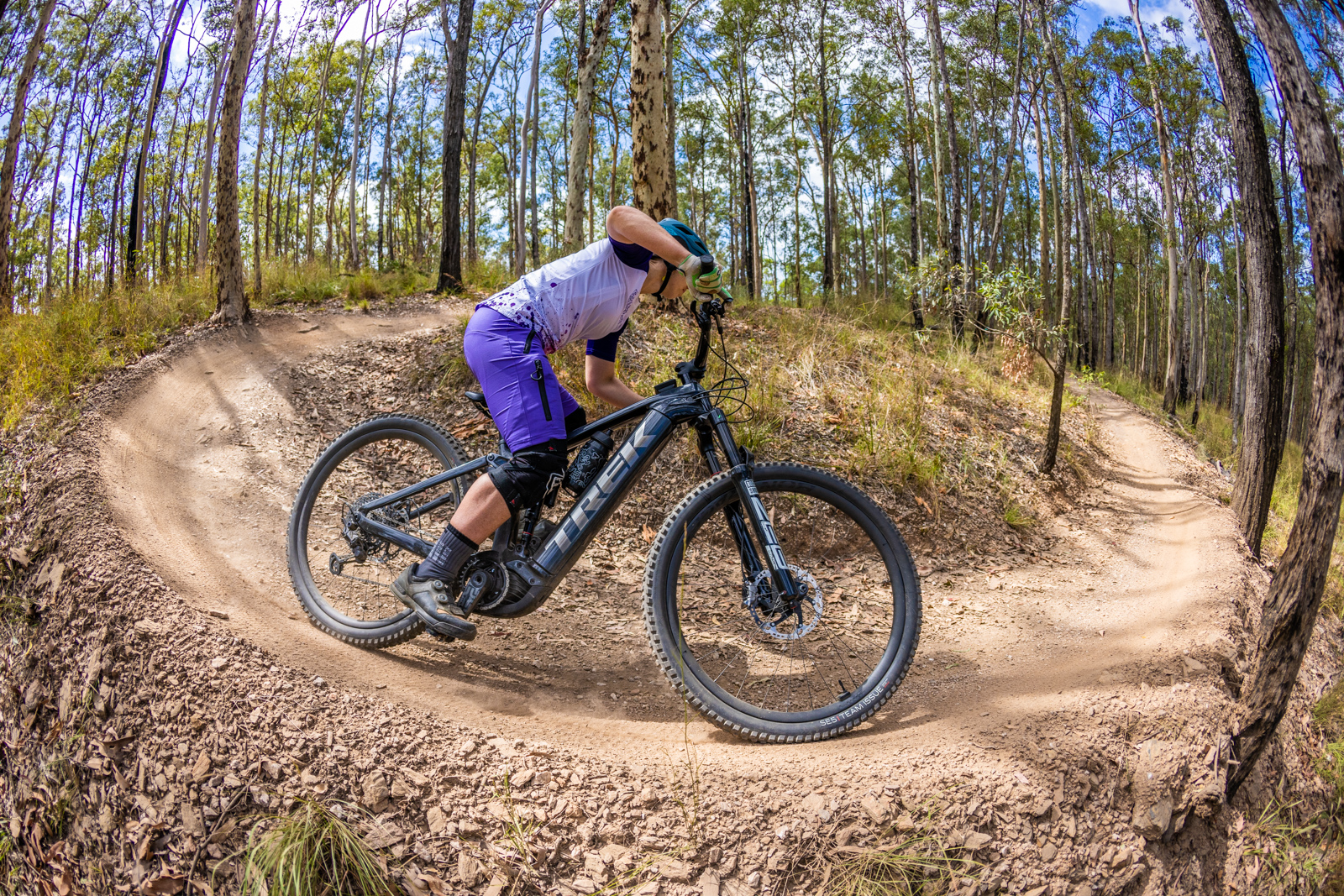
Over the test period, the bike performed exceptionally. The bike, Bosch system and Shimano and RockShox parts are all top shelf, with global support that is very strong in Australia. If you're not sure about eMTBs in terms of service support – a bike like the Trek Rail 9.9 should allay any fears.
Our Take
The Trek Rail 9.9 is a beast of a bike, when it comes to destroying steeps and downhill descents the bike is in its element; the long and slack geometry and capable suspension adds a sense of calm stability to crazy trails, with the updated seat tube angle allowing for a more centred position on traverses and climbs.
The Smart System is set to revolutionise the eBike experience, with multi-system integration and customisation of settings allowing a unique experience that can be tailored to your own ride style and trail conditions. You can exploit the larger 750Wh battery with Tour+, or explode up the hills on Turbo mode. One weakness of the unit I saw is that in its current iteration there is no capacity to export to third party sites like Strava or TrainingPeaks, and no import capacity from these sites or mapping options like RidewithGPS.
It is exciting to see how fast eMTB technology is developing and the integration between components, however ensuring your battery is charged, connecting to the Flow App, SRAM AXS app fro the AirWiz and TyreWiz, and then your own computer (if you’re looking to upload to a third party site) could be off-putting to purists who just want to ‘get on their bike and ride’. But if that's you, you may not be looking at high-spec eMTBs anyway.
I didn’t lose the ABUS key to the RIB, yet I still felt that the likelihood of a battery being stolen was pretty low and perhaps an Allen key, that everyone would carry while riding, would be a better option for battery removal.
$15,999 is a lot of money, however when comparing specs between Giant, Specialized and Orbea’s offerings, the Trek is actually a really good deal; something I never thought I would say about a $15k bike. An XTR group set, carbon wheels, frame, Bosch Smart System and top of the line suspension make this an ultimate offering in the Rail range, but also across available eBikes in Australia.
If you’re after a super capable, stable, plow-through-anything enduro sled with a motor that is full power and long-lasting, for big days self shuttling downhill or days at bikeparks with more gnar than flow, then this may be the bike for you. If you’re after a more nimble trail bike option and enjoy ‘playing’ on the trails than perhaps the Trek Fuel EXe or some of the newer more lightweight and lower power eBikes could be more your jam.
Brand: Trek
Model: Rail 9.9
RRP: $15,999
Weight: 22.77kg (claimed weight)
From: trekbikes.com/au/en-AU/
SPECIFICATIONS
Available Sizes: M, L, XL
Frame Material: OCLV Carbon
Fork: RockShox ZEB Ultimate, 160mm
Shock: RockShox Super Deluxe, 150mm
Battery: Bosch PowerTube 750Wh, smart system
Charger: Bosch standard 4A, 230V, smart system
Motor: Bosch Performance Line CX, 85Nm
Computer: Bosch Kiox 300, Smart System
Shifter: Shimano XTR M9100 12sp
Derailleur: Shimano XTR M9100, Shadow Plus
Crank: E*thirteen E*spec Race carbon, 34T, 165 mm length
Chain: Shimano Dura-Ace/XTR M9100l
Cassette: Shimano XTR M9101, 10-51 12sp
Wheel set: Bontrager Line Pro 30, OCLV Mountain Carbon, Tubeless- Ready, 6-bolt, Boost
Tyres: Bontrager SE6/SE5, 29×2.5, 120TPI
Brakes: Shimano XTR M9120, 220/200mm
Stem: Bontrager Line Pro, 35mm
Handlebars: Bontrager Line Pro, OCLV Carbon, 35mm, 780mm
Seatpost: Bontrager Line Elite, 34.9
Saddle: Bontrager Arvada, 138mm
